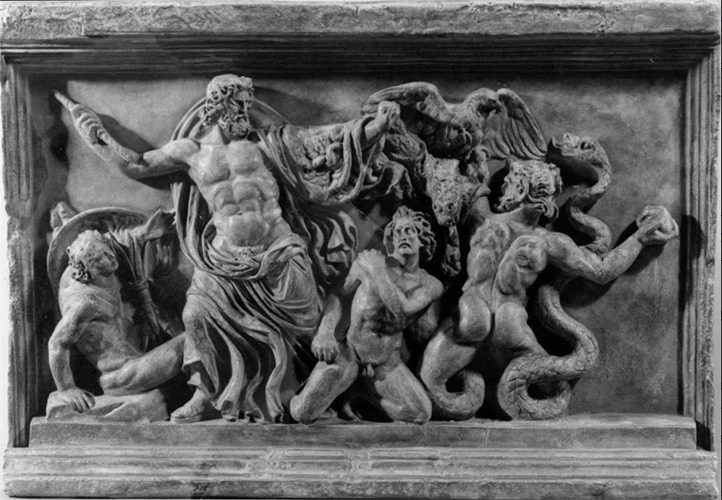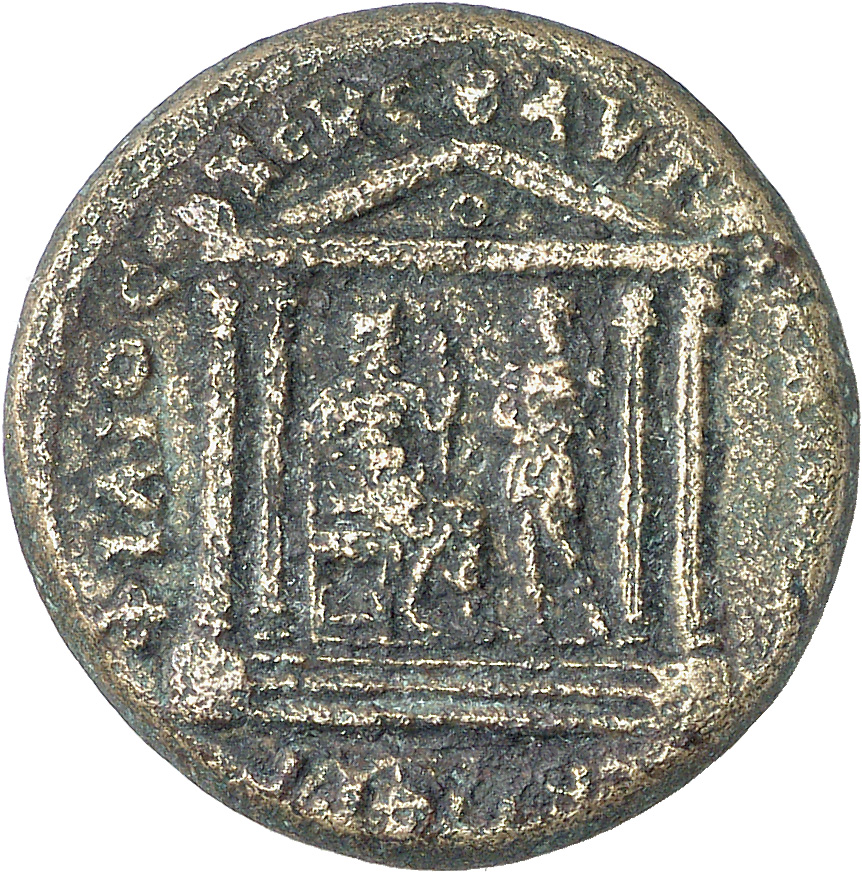This post continues from The Doctrine of Balaam and the Nicolaitans. We are looking at the arguments of Thomas Witulski for dating the final book of the New Testament, the Book of Revelation, to the time of the emperor Hadrian. (Though the last book in the NT canon, I think there are good arguments for suspecting it may have been one of the earliest NT books written – but that’s another subject.)
What was the Throne of Satan (θρόνος τοῦ σατανᾶ) in the city of Pergamon?
In research, the question of what or which sanctuary might have been in the apocalyptist’s mind when using the term θρόνος τού σατανά is extremely controversial. (250f — all references are to W’s Die Johannesoffenbarung Und Kaiser Hadrian and all quotations are translations)
Through 25 pages with most of the text in small print and lengthy footnotes W. addresses the pros and cons of the many proposals:
- Temple of Augustus and the goddess Roma — the first imperial temple in the Roman province of Asia
- The Great Altar for sacrifices for the nearby temples of Athena and Zeus Soter (Saviour).
- Pergamon was the place of the chair of the judge of the proconsul of the province of Asia — Christians presumably would have been tried there
- A major sanctuary dedicated to the healing god Asclepius Soter (Saviour)
- The city of Pergamon — because it had been the place of intense persecution of Christians
- The city of Pergamon — since it was a major centre of emperor worship
- The city of Pergamon — since it was a major centre of pagan worship
- The hill on which Pergamon was built — its shape lending itself to the interpretation
However, here I will cut to the chase and announce “the winner”. It is one that another scholar, Yarbro Collins, had rejected despite all the points in its favour simply because it is “too late”. In W’s view, the throne of Satan was a reference to the giant statue of Zeus Philios, king of the gods, seated on his throne within a stunning temple complex overlooking the city. [This is not the same temple for Zeus Soter included in the above list. That temple was small and lower down on the hill.] The temple of Zeus Philios was consecrated in the year 129, the time of Hadrian. W accordingly sets 129 as the earliest Revelation would have been written.
Justifications for W’s identification of the Throne of Satan with the statue of the enthroned Zeus Philios:

-
- The author of Revelation makes a clear distinction between Satan and both the Roman empire and the emperors at its head. Satan is the celestial enemy of God who was cast out of heaven, as we read in Revelation 12. Satan gave power to the beast but was distinct from the beast, the beast being Rome or its emperor, as per Revelation 13. The temple of Zeus Philios (Roman name: Jupiter Amicalis) was devoted to the worship of Zeus directly, alone, and was not part of the cult of emperor worship.
. - Zeus/Jupiter stood at the head of the Greco-Roman pantheon. His dominance was such that the poetry, the philosophical writings, the daily public attention he received in worship and the prevalent artwork, was so overwhelming that one might almost wonder if his figure signified a trend toward monotheism. Such a deity would readily be identified with Satan by followers of the Jewish Scriptures.
. - Justin, writing in the middle of the second century, informs us that Christians looked on pagan gods as fallen angels or demons (2 Apology 5). This view of the gods was based on the account of the fallen angels in the Jewish Book of Enoch. For Jews and Christians, then, the head of the pagan gods was Satan. (Similarly, in another Jewish writing, Joseph and Aseneth, the highest god of the Egyptians was identified with Satan.) Shortly after Justin, Clement of Alexandria recorded in Exhortation to the Heathen that Zeus could appear as a dragon. W. cites multiple sources of various kinds to demonstrate that the author of Revelation constructed his figure of Satan and the dragon from motifs well-known at the time to apply to Zeus.
. - The word “throne” in Revelation is always used in the literal sense of a chair or throne seat. This makes it unlikely that the author meant to use the term with reference to Pergamon in a figurative sense as a symbol of power or as a substitute for an altar. The smashed remains of a giant statue of Zeus seated on a throne have been discovered at Pergamon in the relevant time period. This statue was originally set in the Temple of Zeus Philios/Jupiter Amicalis at the top of the acropolis overlooking the city. It dominated all other temples in the area. Construction of this temple began with the emperor Trajan in 114 CE though it was not completed and consecrated until the time of Hadrian in 129 CE.
The long overall construction time was not least due to the fact that before the actual sanctuary was erected on the hilltop of the Pergamenian acropolis on its southwestern slope, supporting structures had to be built to a considerable extent, which had to carry the courtyard and the sacrificial altar of the temple. For the construction of such an extensive sanctuary, an in itself extraordinarily unsuitable location was chosen. This is certainly due to the fact that the sanctuary built here was to have a highly exposed position that would determine the entire cityscape. (276, my bolding in all quotations)
. - The temple was devoted to the worship of Zeus alone, independently of the emperor. It contained an enormous statue of Zeus seated on his throne. Coins depicted the emperor Trajan standing before the enthroned Zeus. The temple dominated the acropolis and the entire city.
- The author of Revelation makes a clear distinction between Satan and both the Roman empire and the emperors at its head. Satan is the celestial enemy of God who was cast out of heaven, as we read in Revelation 12. Satan gave power to the beast but was distinct from the beast, the beast being Rome or its emperor, as per Revelation 13. The temple of Zeus Philios (Roman name: Jupiter Amicalis) was devoted to the worship of Zeus directly, alone, and was not part of the cult of emperor worship.

